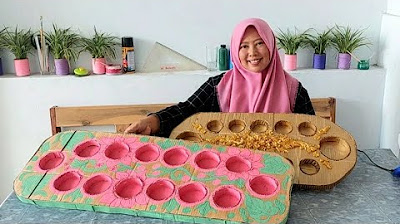Easy Foamboard Wing Airfoil: the Basic Version
Summary
TLDRThis video demonstrates how to quickly and affordably create an airfoil using Dollar Tree foam board and hot glue. The process involves scoring, folding, and gluing the foam to form a simple, functional wing structure. The method allows for customization of the airfoil’s thickness, camber, and chord, making it ideal for model aircraft enthusiasts. While the airfoil’s trailing edge may be blunt and the paper covering may not hold up in wet conditions, the video offers solutions for these issues in future installments. This technique provides an economical and easy way to craft airfoils with minimal tools and experience.
Takeaways
- 😀 Simple, affordable method for making airfoils using Dollar Tree foam board and hot glue.
- 😀 Foam board is scored and folded to create the shape of a true airfoil with paper left on the outside.
- 😀 The process requires minimal tools: straight edge, clamps, cutting device for scoring, and hot glue.
- 😀 The foam board can be customized in terms of thickness, camber, and chord by adjusting dimensions and cuts.
- 😀 The foam structure allows for integrated control surfaces, such as ailerons and flaps, using channels within the foam.
- 😀 The method uses a single continuous piece of foam board to form both the upper and lower wing skins, and control surfaces.
- 😀 The airfoil construction is fast and requires little skill or finesse, making it ideal for beginners or quick projects.
- 😀 The foam structure is flexible, offering options for customizing wing geometry, including increasing camber and thickness.
- 😀 The basic airfoil structure does not have internal support other than the foam board itself, but can hold up to significant weight.
- 😀 The foam board is lightweight, with the entire airfoil weighing just 2.4 ounces for a 30-inch wingspan and 6-inch cord.
- 😀 Future videos will cover topics like adding wing coverings (e.g., tape or paint), integrating control surfaces, and joining multiple wings for larger designs.
Q & A
What materials are used to create the airfoils in this method?
-The primary materials used are Dollar Tree foam board, hot glue, and a measuring device. Optionally, clamps and a straight edge are recommended for better precision.
What is the advantage of using Dollar Tree foam board for building airfoils?
-Dollar Tree foam board is cheap and easy to work with, making it a cost-effective option for building airfoils. It allows for flexibility in design and is easy to shape, even for beginners.
How is the foam board prepared for making the airfoil?
-The foam board is first scored along a 6-inch line, removing the paper from one side. The board is then folded, with the unpeeled paper side on the outside, to form the upper and lower skins of the airfoil.
What purpose do the 1-inch forming strips serve in the construction process?
-The 1-inch forming strips act as spacers to ensure the correct separation between the upper and lower surfaces of the wing. They help in maintaining the shape and structure of the airfoil during construction.
What is the significance of the trailing edge in the airfoil construction?
-The trailing edge serves as the end of the airfoil, and glue is applied here to bond the surfaces together. While the trailing edge is somewhat blunt, this can be improved in future videos with different techniques.
Can the method described be used to create control surfaces like ailerons or flaps?
-Yes, the method allows for the creation of integral control surfaces by cutting into the bottom of the airfoil and running servo lines through the internal channels.
What are the potential drawbacks of using this method for airfoil construction?
-The main drawbacks are the blunt trailing edge and the exposure of paper on the outside of the foam, which may not be ideal for flying in wet conditions. The solution involves covering the airfoil with tape or paint.
How is the strength of the airfoil maintained despite the lack of internal spars?
-The strength comes from the compression of the foam itself. The foam board structure, when glued together properly, provides enough rigidity to handle the forces encountered during flight.
Can the airfoil design be modified for different performance characteristics?
-Yes, by adjusting the dimensions, thickness, and camber of the cuts, the airfoil can be customized to meet specific design requirements, such as changing the wing's chord or thickness.
How does the method allow for mounting a motor or servos?
-The foam board includes internal channels where power supply lines can be run through the front for motor mounting, while servo lines can be routed through the back channel for controlling ailerons or flaps.
Outlines

This section is available to paid users only. Please upgrade to access this part.
Upgrade NowMindmap

This section is available to paid users only. Please upgrade to access this part.
Upgrade NowKeywords

This section is available to paid users only. Please upgrade to access this part.
Upgrade NowHighlights

This section is available to paid users only. Please upgrade to access this part.
Upgrade NowTranscripts

This section is available to paid users only. Please upgrade to access this part.
Upgrade NowBrowse More Related Video
5.0 / 5 (0 votes)





